YOUR GUIDE TO
PLANNING A
SUCCESSFUL
GOLF TOURNAMENT
REVENUE GENERATION
MAXIMIZE SIGN-UPS
TIMETABLE
WHICH GOLF COURSE – WHEN
& WHERE
LEADERSHIP – WHO’S IN CHARGE
BUDGET PLANNER
You’re thinking about staging a big corporate or fundraising golf tournament. No doubt, without proper planning, budgeting and “feet on the ground” site inspections, these team tournaments can go off the rails pretty quickly! Just a few things that can go wrong:
• Complaints about beginner players who just want to have fun being paired with “too serious” players
• Event prizes that don’t mesh with the tournament’s scope and vibe
• Confusion about rules and various contests
• Cart and seating demand that exceeds availability
• There wasn’t a good “Bad Weather” Plan B in place
Here is your guide to planning a successful golf tournament to help you avoid these pitfalls.

When you combine impeccable planning with enough sponsor support, revenue generators and promotional buzz, you’re well on your way to a smashing success. This guide is provided to help you ensure that’s exactly what happens. As you get going, be mindful of the five-ingredient “secret sauce” for cooking up a great golf tournament that generates maximum revenue:
1. Good captain (tournament director) and crew (volunteers/committees).
2. The right course, playing format and inclusions.
3. The right entry fee.
4. Event communication and promotion using today’s digital mediums.
5. Revenue generation through sponsorship’s, donations, auctions raffles, and contests.

Who’s in Charge
Every tournament is unique – from fundraisers and corporate client/vendor events to company or community outings. No matter the event size, planning should be directed by a dedicated tournament chairperson who needs to be equal parts cheerleader, taskmaster, and diplomat, and should be supported by a volunteer committee.
Start by looking at the bigger picture and create a document that spells out the goals of the golf tournament and initial budget template. The working planner should also spell out all deadlines, benchmarks, roles and responsibilities.
The number of planning volunteers needed depends on the tournament’s scope, sidebar events, how meals are to be handled and many other things unique to your golf tournament. It’s KEY to have volunteers who enjoy people, are always “on”, don’t mind hawking and are committed to putting in whatever time it takes. Succeed in this and the rest will fall in place.
Most tournaments can get by using just two committees: one for Sales and one for the tournament.
The Sales Committee should manage sales, promotion, registrations, prizes/swag, clothing, donations, event/hole sponsors and silent auction/raffle items. We suggest a minimum of three people on each committee. A promotional products consultant like Ads-Up Promotions can help with ideas for promoting your tournament. Consider fundraising software to help you stay organized and to optimize the revenue generation aspect of the tournament. Options include the Fund Raiser Suite or the very easy to use web-based Golfregistrations.com.
The tournament Committee should handle the event’s overall activities and schedule. This includes the golf tournament’s format, supplier contacts, volunteers, signage, pro/celebrity search, on-course contests, audiovisual and all on course and post-event food and beverage needs and payments. The golf course should be a big help with many of these tasks.
Timetable
One Year Prior to the Event:
Select and reserve a golf course to hold your tournament. Start to consider who could be a director or coordinator for the event.
Nine Months Prior to the Event:
Set a budget for your golf tournament. Allocate money for food, beverages, gifts, prizes, green fees, golf carts, and photography. Put together a guest list email or send out printed invitations. Select the tournament; format (scramble, stroke play, match play, etc). Find volunteers to help plan and organize from now until the day of the event.
Six Months Prior to the Event:
Coordinate food and beverage menus and arrange for tournament sponsorship. Select any contests you may want; i.e. hole-in-one, longest drive, closest to the pin, etc. Obtain hole-in-one insurance if necessary and select prizes for the contests and tournament winners.
Three Months Prior to the Event:
Meet with the golf course staff to finalize arrangements with course times and banquet facilities. Send out invitations that include directions to the course and specific starting times. Also remember to order tee prizes, awards, hand-outs and tee signs.
Two Months Prior to the Event:
Check the progress of outside vendors providing tee prizes, awards, giveaways, and tee signs. Finalize menus and beverage or snack carts. Follow up with golf tournament volunteers. Do a walk-through of the course facilities to familiarize yourself with the location. Tabulate a preliminary number of guests based on invitation responses.
Two Weeks Prior to the Event:
Finalize preparations of all tee prizes, awards, giveaways and tee signs and have them delivered to the tournament director or to the course. Setup a preliminary player list and begin selecting team captains.
Two Days Prior to the Event:
Finalize the player list and send it to the golf course director. Double check any final details with the golf course. Review jobs for volunteer staff and coordinate any possible timing issues to ensure the golf tournament runs smoothly. Take into consideration the time for golfing, food, and an awards ceremony.

Plan Ahead

Have someone visit the golf course.
Day of the Event:
Arrive at least two hours before the guests. Be ready for possible no-shows, cancellations, and last-minute changes. If you’re playing in the tournament, be sure you are in the first group to finish in order to get back to the clubhouse to check on dinner preparations and the awards ceremony. Last but not least, don’t forget to have fun!
When & Where
Next up is when and where to play. Start your search by leaning on your own personal and business golfing network. Go online to view course websites, Google images, course rating sites, etc. You’ll quickly get a feel for each course’s infrastructure and ability to host tournaments. Some courses will stand out with a greater emphasis on tournaments.
You should already have a couple of dates and times as options to plan around as well as an idea of your event’s food, beverage and social/staging needs. It’s important to check for any area events, holidays and other tournaments that may conflict or complicate your event.
Because your event’s large block of players will essentially close the course to other golfers for much of the day, most courses have well-established tournament rules and policies. Golf tournaments are usually restricted to weekdays or specific days of the week with a shotgun start time such as 9AM or 1 PM. If you can’t guarantee their minimum required number of players, they may revert your format to a “1st tee” or split tee start.
If your goal is to raise a lot of money, a private course will allow you to charge a higher entry fee because of perceived value. It will also attract a higher income golfer demographic which will also allow you to make more money. This may also provide you the opportunity to land bigger sponsors.
Most private clubs only allow outside events on Mondays. Course rules should be well understood before any additional effort goes into the tournament! You should visit the course(s) on your short list to meet the general manager and other key personnel like the clubhouse/pro shop, Food & Beverage staff, etc. This will help clear up any ambiguity or open issues.
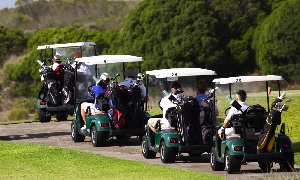
18-hole golf courses can handle up to 144 golfers.
How Many Players
18-hole golf courses can handle up to 144 golfers – that’s 36 teams of foursomes. Two foursomes would be at each tee for a shotgun start, allowing everyone to finish about the same time. If the number of players is large a morning and afternoon split tee time is needed – or a second golf course. Play goes much faster if you have 128 golfers or less-thus only one group starts on each of the par 3’s. Since the profit comes mostly from sponsors, fewer golfers will not cost the event much money unless you negotiated a flat fee for the course vs per player.
Food & Beverage
Your food and beverage event plan will have a number of details that need to be determined:
• Meal times
• Type of meal (sit down or buffet)
• Bar services
• Hors d’oeuvres
• Meal prices
• Payment method
• Location of the head table
• Guest speaker/entertainment and costs
• Podium/mic location – other audio/video needs
• Prize and award table location
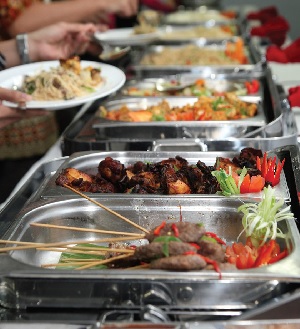
It’s customary to offer beverage service on the course during the event. You must decide if this cost is included in your entry fee and you must plan for extra carts and volunteers to supply the participants with beverages during the tournament. Your post-round beverages can be a cash bar or try sponsored poker chips as drink vouchers.
The Format
The format you choose will impact sign-ups as well as how long the golf tournament lasts, so you need to understand your tournament’s goals and your “target market” well.
The scramble format is the most popular as it’s the least intimidating and easiest-to-keep-score option. Scrambles can be played by 2-, 3- or 4-person teams with all team members hitting their own ball. After each shot, the team decides which shot is the best one. Everyone shoots again from that spot, and so on, until a ball is in the hole.
Better golfers tend to enjoy a best ball tournament (best score from your group) while groups featuring a wide range of abilities might be best suited to a modified scramble format like the Shamble the best drive is used by everyone in your group and you play your own ball the rest of the hole, using the lowest score).
Revenue Rich Formats – the bigger the show, the bigger the dough. Consider different formats like a pro or celebrity-am that places a local golf pro or celebrity in each foursome to warrant higher registration fees. A golf-athon would be another option where players raise pledges for each hole they play.
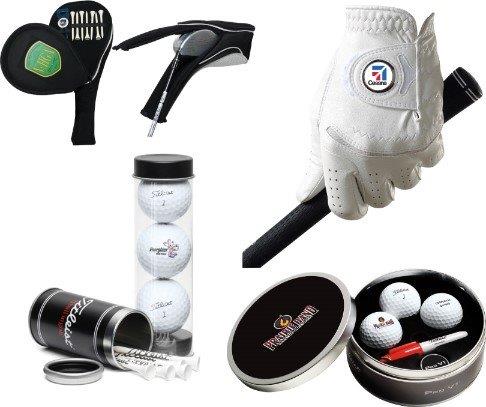
Golf Tournament Gifts. See Options.
The Budget
Once you’ve selected the course, format, and activities, you can start your budgeting. Details to consider include golf and cart fees, website, food services (breakfast, box lunch, dinner), beverages, driving range use, bag service, photography, speakers/entertainment, printing and other promotional costs, insurance, lodging, transportation, decor, tee prizes, and awards. Prizes and awards need to be about 25% of your budget. The more products you buy → the more sponsors you get → the more money you make. See our sample budget at the end of this guide.
Once you’ve estimated all expenses, you can determine your entry fee. Golfers are looking for a good deal. Fair pricing gives you a better chance at filling your tee sheet and should cover all variable costs. At this point you should focus on leveraging sponsorships, games, raffles, and donations as primary revenue generators. See more information in the Revenue Generation section.
Invite & Promote to Maximize Sign-Ups
It’s key to announce, promote, advertise and send out invitations for the outing at least three months in advance. If it is a returning event, send out a “save the date” at the beginning of the year. This gives you time to get a head start on other activities. You also need to consider whether participants will be coming from out of town and need to make travel and lodging arrangements. For building your invite list, start with everyone you and your committee members know that golf. Many golfers are quite engaged with the sport and look for any chance to play, especially for a cause. Your office, client or donor base are obvious places to start this effort. All of these communication methods should be considered:
• Business/personal relationships and networking
• Event website or page on your organization’s website
• Printed and mailed invitations
• Mass emails
• Consider integrating email effort with online reservation
• Dedicated Facebook Event page
• Office/local bulletin boards – small posters or cards
• Press releases
• Twitter and LinkedIn posts
Keep in mind that it’s much easier and more effective to use today’s easy-to-use digital tools to promote your event. These can convey more event information than any brochure and can be updated at any time. Invitations and registration forms should include the golf tournament date, time, location, format, cost, and RSVP deadline. If providing free tournament apparel, be sure to ask for appropriate shirt, pant, glove hand and/or shoe sizes.
Two months prior to the golf tournament, send out the final event details and post them online, making sure to include a map to the course, relevant phone numbers, lodging information, course rules (dress code/no-spike rules) pro shop hours, range hours and the hours of any social activities.
Be prepared, depending on the event’s scale, to call on your committee assistants for help with: preparing and mailing flyers, creating rule sheets, printing score sheets, collecting fees, preparing bag tags, managing the check-in table, preparing a list of participants, assigning golf carts, creating special event signs, photography during the tournament, posting results after golfing, food service, decoration installation and hiring entertainment or speakers. Be sure to lean on your contact at the course for “plan and prep” assistance!
Revenue Generation
Golf’s annual charitable impact is $3.9 billion, mostly from regular golfers playing in 143,000 events. The average golf tournament has 80 players and raises $5,000. We like to teach you how to raise at least $40,000. Many larger tournaments are generating $300,000 or more.
Selling sponsorships for the tournament name, carts, driving range, holes, awards and the meals can quickly increase your profits with little overhead. Your fundraising and sponsorship efforts must be a top objective. They need to be well-planned and staffed. Starting early in the year and with a well-oiled approach is a key for success.
Sponsorships generally receive recognition through signage, event premiums, the event website, and participant networking. If you’re able to offer media coverage as a part of the sponsor package this greatly increases your opportunity for success.
In-kind donations can greatly offset your expenses, allowing you to enjoy more profits. Some donations might include food, beverage, event premiums and prizes. Consider soliciting for donated products or services for auctions and raffles. Keep in mind that items donated for the goodie bag may actually take away revenue opportunities for the event if you follow the philosophy of $2 of sponsor funds for every $1 of product purchased.

Best Promotional Products For Golf Tournament Fundraising
Scramble Pic©
With ten $500 sponsors you’ll have $5,000. If the Scramble Pic costs $19 and you have 100 golfers the cost will be $2,000, thus a $3,000 profit for your cause. See Price.
Cooling Towels
These have been in high demand for many years. Just wet the cooling towel and it cools down to about 65 degrees. As long as it’s wet, it cools, and when it dries out, just add water. New dye sublimated technology allows for a stunning and soft to the touch full-color imprint. Multiple full-color sponsors logos can be printed on the towels! If the towels sell for $6-$8 and you have 20 sponsors at $1 each, the charity earns a cool profit of $12+ each. See Options.
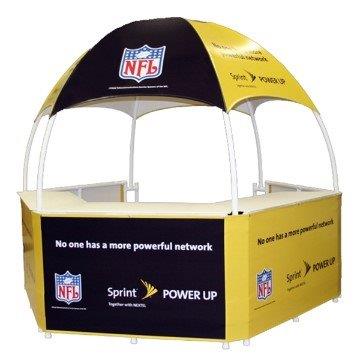 Hole Sponsors
Hole Sponsors
Hole sponsor signs and/or custom golf flags are ideal ways to get added revenue at a very small cost. Golf tournaments charge anywhere from $100 to $2,500 to be a hole sponsor. Some custom flags cost $25 and can be used year after year or can be signed and given to the sponsor as a thank you. See Options.
Golf Balls
Some manufacturer’s (like Titleist) offer a discount on golf balls used for events as long as they have either the name or date of the golf tournament printed on them. (Titleist will even print the name or date on the second side without an imprint charge.) Contact us for more information on your options. Since most of the golfers in these tournaments do not golf much each year, they are more interested in new and unique products instead of the most expensive golf balls. Remember golf balls have two imprint locations. See Options.
Apparel Sponsor
Maximize sponsors brand equity with the Glove Branders Golf Gloves. Beyond the WOW factor, these gloves are premium golf gloves and feature multiple areas for sponsorship. Shirts, wind jackets, and socks are also great options. See Options.
Go to our full catalog.
Golf Tournament Kits
Kits are the easiest way to have a multitude of the latest and greatest products golfers are looking for. We recommend you sell different sponsorships for each of the products in the kit – using 100% markup on the product. Items like golf balls, club and ball cleaners, and towels, can contain multiple logos for added revenue. If the event is a fundraiser for a baseball or hockey team, include a baseball or puck. You can even include a fishing lure in the kit if you want to give the golfers items they will use and there are 5 times as many fishermen as golfers. See Options.
Pitchfix
This hi-tech, and fun divot tool is in high demand. It is branded with a removable ball marker. The XL version has a second side imprint area, large enough for two extra logos. Pitchfix also has a tin option in which each golfer would receive a branded tin containing a logoed tool, hat clip and extra ball marker (thus four imprint areas) all for under $25. The golfers, sponsors, and fundraisers love this product. See Options.
Poker Chip Ball Markers
Drink tokens-with two $500 sponsors = $1,000. The chips cost $1.49 so with 100 golfers that’s $149. That will leave you $850 for drinks. When the beverage cart comes by, they will put a mark on the chip to show you received your beverage, leaving the advertising with the golfer. Another use for the chips would be a peel-off tab with a hidden prize underneath or numbers for a drawing. See options.

Golf shoe Fitting Program
We have this down to a science! This is an opportunity where we provide shoes for the event participants at a discount. We ship, based on a formula for the most common sizes, with an additional 20%, ensuring a fit for everyone. You return the unused product and if we miss any sizes they will be shipped directly to the recipient. Logoed shoes or golf bags are a great way to co-brand. Contact us for more information on this program.
Cart Sponsor
Golf cart banners that are easily attached to the golf cart are available. The graphic is dye sublimated on neoprene fabric. See Banner Options.
Other Sponsor Options
• Major Event Sponsors – Signage upon arrival at the tables and on the website.
• Driving Range Sponsor – have a sign on the range thanking them or have custom tees laying on the range with their logo on them.
• Drink Sponsors – use poker chip ball markers.
• Photography and Video Sponsors – hand out team photos in a picture frame with the name of the golf tournament and the sponsor.
• Lunch and Dinner Sponsors – If providing a lunch box, have logoed napkins, place-mats or drink-ware.
• Course Event Sponsors: Long Drive (Mens-Womens), Closest to the Pin, Straight Drive, Shortest Drive, Longest Putt, Hole in One, 1st, 2nd, 3rd Place teams – Each can have different sponsors. Great items for these winners are the Golf Globe Game, golf equipment, gift cards, eyewear, a GPS watch and other technology products like the Fitbit or televisions.
Get to the Course Early
Get to the course early. The plans have been made, now it’s time to confirm everything at the course is set up as planned. You’ll want to request a couple of extra carts to cover possible breakdowns, the need for rangers, message-food-beverage deliveries, etc. Volunteers will also be available for any first aid needs, interpretation of rules and for monitoring hole contests.


It’s good to have a greeter in and around the line to mix with players and add to the fun.
Registration
A fast and simple registration process will get your event off to a great start. The registration table is your first chance to make a favorable impression on the tournament participants. Meet early with your designated registration table volunteers to review any last minute questions. It’s good to have an enthusiastic greeter in and around the line to mix with players and add to the fun.
Designate another volunteer to hand out hole tee-off assignments. It’s a good idea to move the prize table away from the registration table to prevent bottlenecking as players rifle through their goodie bags, talk about sizes (if clothing is offered), etc.
The table should be located near the clubhouse entrance or the first tee. Arm the table with, among other items: pencils, scorecards, bag tags, tees, divot tools, tee gifts, pairing sheets, tee times, contest sign-up forms, alphabetized player rosters, cash box, rules and format sheets, paperweights and a trash can.

Players are responsible only for their scores
After the Golfing is Over
Players are responsible only for their individual hole scores, not the addition of the totals. All team handicapping and scoring is the responsibility of the official scorer (typically the golf pro). Each team should sign and witness their scorecard. The scoreboard should be in an area which is easily accessible after finishing play – and all scores should be posted as quickly as possible for everyone to review.
What’d I Win
One of the great things about golf is that handicapping teams gives everyone a more even chance to win. In fact, it’s not uncommon to have multiple winners in team events. You can have individual winners for longest putt, longest drive, closest to the pin, fewest putts, most greens in regulation and closest drive to the center of the fairway. You can also set up putting contests on the practice green or offer raffles to allow more winners.
The key thing to remember is to have FUN, but be sure to create revenue from your fun! People will pay because they understand it’s a fundraiser/charity event.

Silent Auction and Raffles
Live, silent or online auctions can turn regular events into huge events. The bigger the items offered, the more money you’ll make as any donated or discounted item/services can net 100% in revenue. Don’t settle for just gift baskets! Popular items include trips, dinners, professional services, golf outings, sports memorabilia, appliances, iPads, etc. Silent auctions tend not to disrupt the flow of a golf tournament and are flexible, as you can offer as many items as you want – the more the better. Start your auction well in advance of your tournament by using all of your communication channels.
Plan big and it will pay off! Raffles typically feature items like golf merchandise, gift certificates and premiums. Poker chip ball markers with a peel-off label works well for raffles. Golfers will pay $10-$100 per poker chip for a chance to win big prizes, thus you make money on the raffle and on the sale of the chips. Isn’t fundraising fun!

Drivers, Wedges and GPS Golf Watches. See Options.
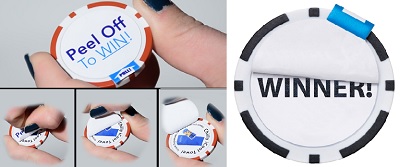
Add excitement to your event with a peel off label. Have a raffle, create a contest, or make a game out of it! See Options.
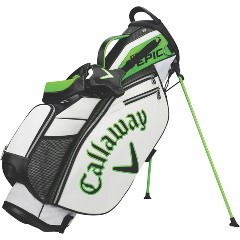
Custom Golf Bags. See Options.
 Post Event Details
Post Event Details
Did everyone have a great time at your event? Will they remember the tournament as one they would like to return to next year and would they want to invite some of their friends?
Just because the event is over, don’t think you’re done. The best time to plan next year’s golf tournament is now. It is a good time to reserve your facilities for next year and to start planning the prizes and awards.
Send the participants a thank you note and a team or group photo. Let them know if you reached your fundraising goals. Also, thank your assistants who helped you make the event a success. It’s a great time to re-thank the sponsors and ask if they think they would like the opportunity to be a sponsor next year.
Have fun, good luck and make a lot of money!
Raise even more money with pledges! Create a donations site for participating golfers to raise additional funds by asking friends and family to pledge their team.
Budget Planner Sample Budget
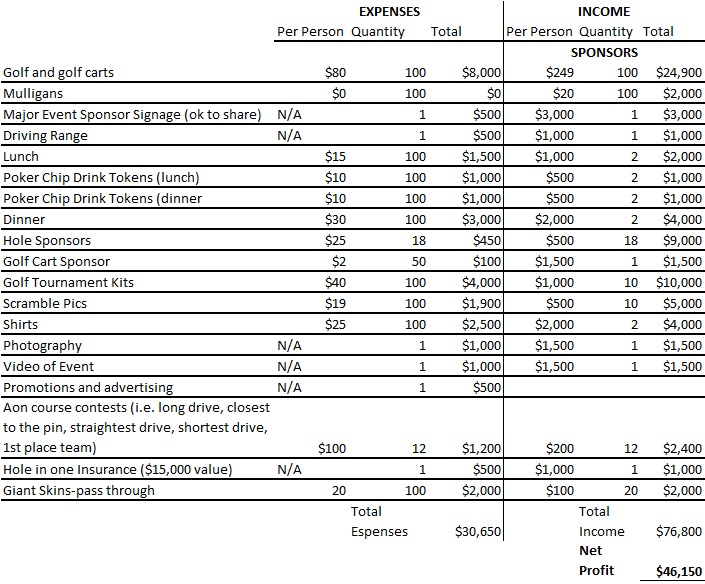


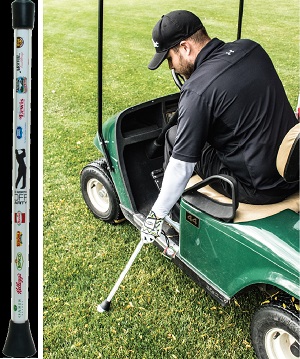

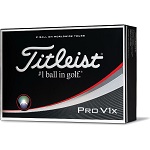
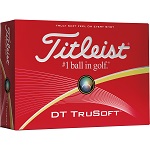
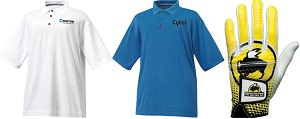
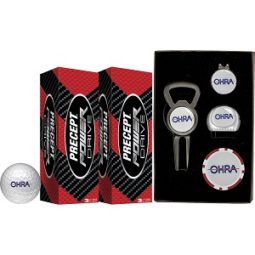
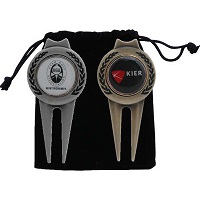

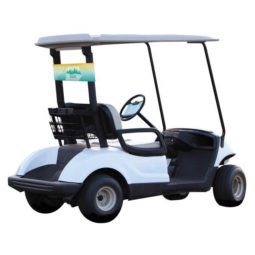

I dont typically comment but I gotta say thankyou for the post on this wonderful 1
This golf idea is very good and more effective.
Thanks, Yuni. We’re glad you found it useful.
I am constantly searching online for ideas that can facilitate me. Thanks!